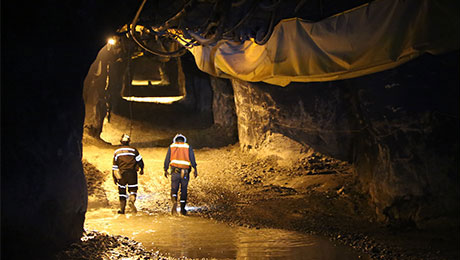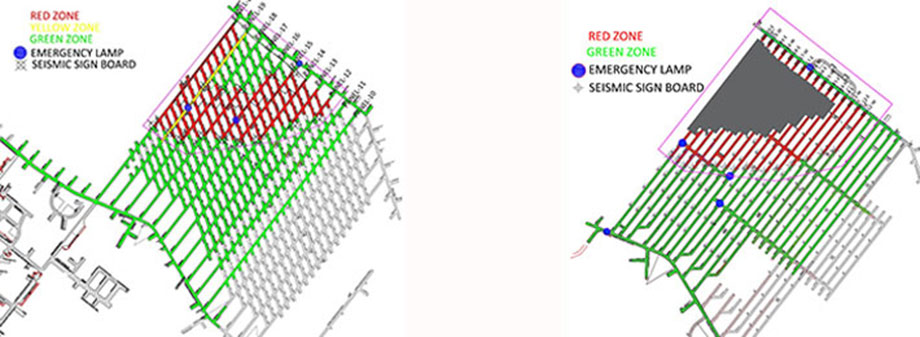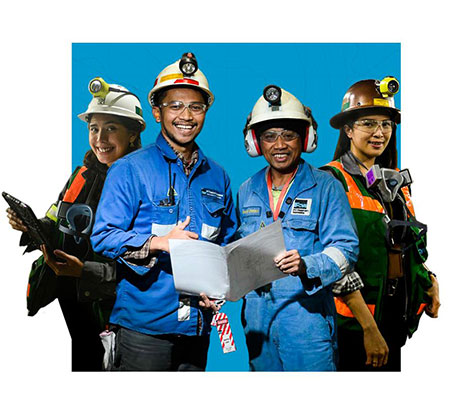01 August 2016

Underground mining is a hazardous and challenging operation. In addition to real hazards where workers labor in constant humidity and darkness, underground operations are frequently faced with other challenges.
Our earth is comprised of dynamic elements, as evident in the movement of earth and rocks that is among others the result of seismic activity.
It is undeniable that underground mining alters and or increases seismic activity in the ground. In the PTFI underground mining operations area, specifically, even without the mining operation’s exploitation, there is definitely seismic activity. To boot, changes in existing soil and rock pressure associated with underground mining are a fact, and therefore potential geotechnical hazards need to be dealt with seriously and in a measured manner, in order to minimize the danger.
In response to natural challenges existent in underground mining, PTFI is not allowing such challenges to hamper its outstanding operation, recognized as one of the world’s biggest underground undertaking.
The GeoEngineering Division by way of the Underground Geotechnical & Hydrology Department has put into effect a protocol on division of production work areas in the DMLZ Underground Mine. Based on exhaustive studies of geotechnical dynamics in underground mines, the Underground Geotechnical & Hydrology team issued recommendation on which areas are safe, and which pose potential hazards, in the PTFI underground production area.

Under the protocol, hazardous areas (red zones) are distinguished from safe areas (green zones) to ensure production in the DMLZ Mine proceeds safely. The protocol comes into force under the following conditions: 1) when a seismic event exceeds the 0.7 magnitude threshold, and 2) when seismic events exceeding -0.3 magnitude register more than three times within the span of 1 hour. These seismic activities are recorded by the microseismic system at the DMLZ Mine (comprising sensors similar to a seismograph and installed in the DMLZ underground mine area) that monitors mining activity in the mine in real time, 24/7, and delivers high-accuracy data.
When these conditions appear, workers in red zones at extraction and undercut levels will be evacuated to green zones. Subsequently the Underground Geotechnical & Hydrology team will follow up with analyses and inspections together with the production group, to assess the seismic activity and confirm whether or not the area in question is safe for work to proceed.
An accurate and effective information system is essential to ensure all workers in the underground mining area are informed when the re-entry protocol comes into effect. In addition to emergency lights coming on and alarms sounding during a code red situation, clearly visible markers will have been installed to define the boundaries of red and green zones respectively. To complement the information system, the ops-mine underground team recommends integrating emergency lights and alarms with Gai-tronics – an information system operated by the underground automation team that is integrated with dispatchers who will direct re-entry protocol execution through loudspeakers distributed throughout the production area, to expand the warning reach and better communicate instructions to workers.
Natural hazards and work safety are two matters brooking no compromise. PTFI strives to a maximum extent to distance workers from exposure to mining-induced seismicity. The seismic threat is a real danger and therefore fine-tuned engineering is highly necessary in order for operations to proceed smoothly and productively. To those working at the DMLZ Mine, we urge you ensure thorough understanding of the re-entry protocol. Work safely and keep safe! (Sularso)
Kami menghimbau para pencari kerja untuk berhati-hati dan mewaspadai beragam modus penipuan perekrutan yang mengatasnamakan PT Freeport Indonesia. Dalam setiap proses rekrutmen dan penerimaan karyawan, PT Freeport Indonesia maupun konsultan rekruitmennya tidak memungut biaya apapun.
Untuk melihat lowongan, silakan akses melalui link berikut: ptfi e-recruitment
Untuk melihat informasi magang, silakan akses melalui link berikut: Internship Program
